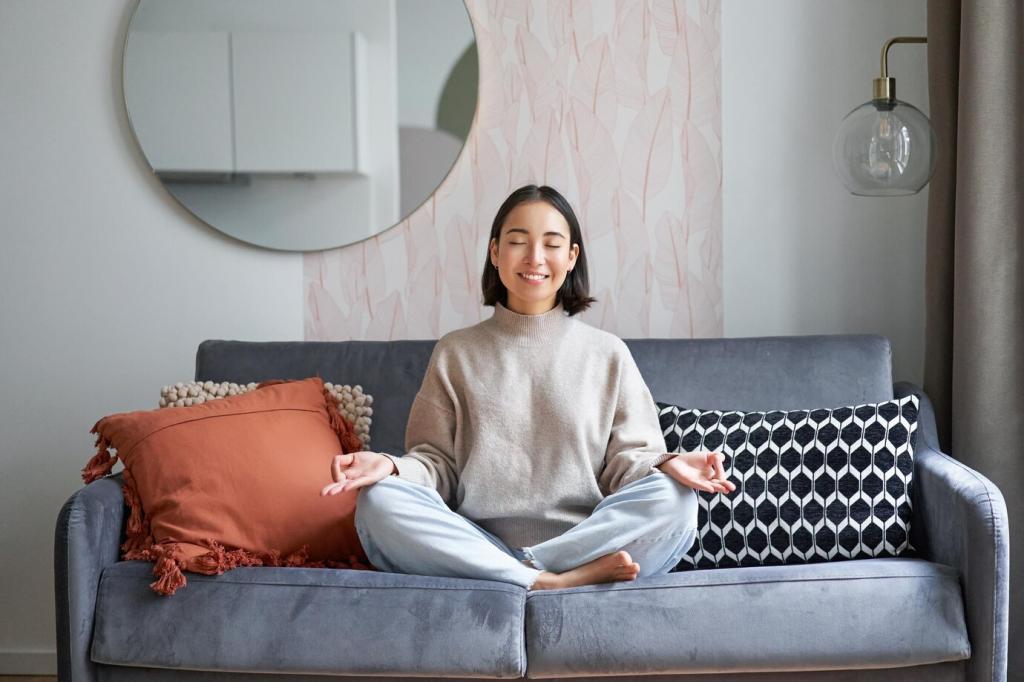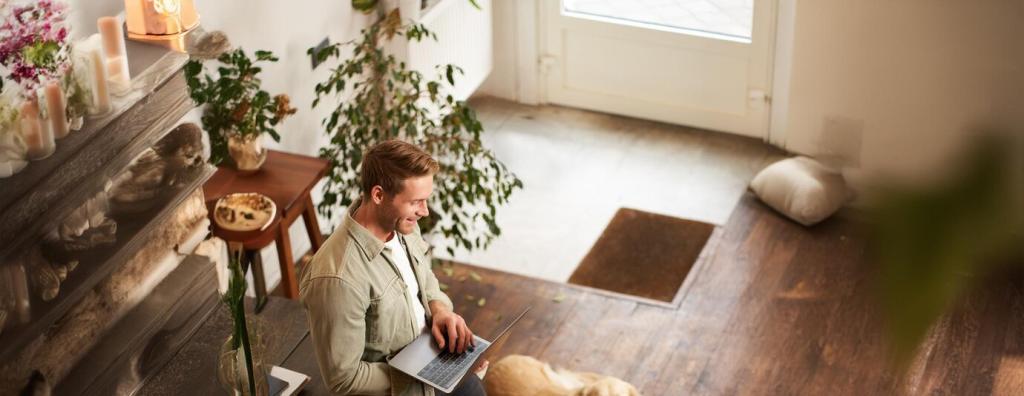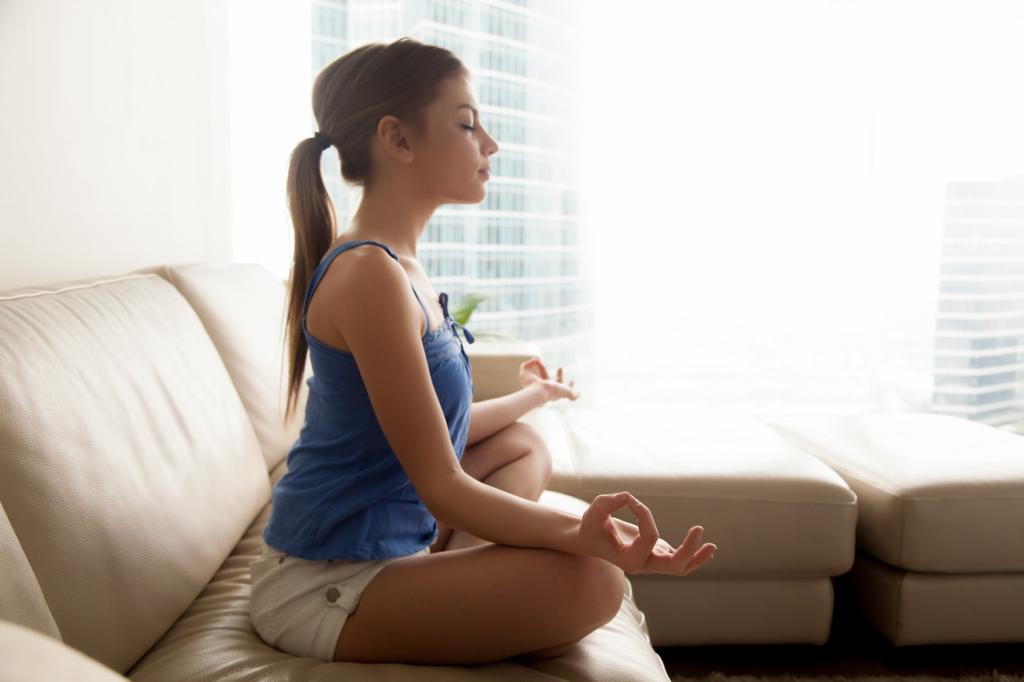Meditative Environments: Transforming Home Spaces
Theme selected: Meditative Environments: Transforming Home Spaces. Step into a calmer way of living as we reimagine each room as a gentle guide toward focus, rest, and daily renewal.


The Quiet Science of Calm Interiors
Noise steals attention faster than we notice. Layer soft textiles, use door seals, and introduce a small white-noise source to quiet harsh edges. Even a gently humming fan can create a cocoon that supports reading, journaling, and steady breathing.
The Quiet Science of Calm Interiors
Warm, dimmable lighting cues the nervous system toward rest. Position lamps at eye level, favor 2700–3000K bulbs at night, and let morning light flood in. A simple ritual of turning lights down after sunset can reset your body into unhurried evening rhythms.



Nature Indoors, Nature Within

Plants with Purpose
Select forgiving, sculptural plants—ZZ, snake plant, pothos—and group them in threes for a simple rhythm. Watering can become a weekly meditation: slow pour, attentive gaze, and a moment to notice new leaves unfolding like quiet victories.

Stone, Wood, and Water
A wooden stool, a smooth river stone, or a small tabletop fountain anchors attention through weight and sound. These materials whisper of forests and streams, reminding you that steadiness is not a mood but a habitat you can cultivate.

A Window Becomes a Vista
Treat a window like a framed landscape. Pull furniture back a step, clear the sill, and place a single object—a fern, a shell—to guide the eye. Five breaths by this view can reset a hectic morning without leaving home.
Designing for Breath and Flow
The Pause Chair
Designate one chair for nothing but pausing. Keep a throw, a slim notebook, and a pen nearby. Sit for three minutes between tasks, unclench your jaw, and watch tension unknot as your surroundings learn to host calm on command.
Pathways without Clutter
Clear floor routes like gentle streams flowing through rooms. Use hidden baskets to gather stray items and a nightly sweep to reset. When walking becomes unimpeded, your thoughts follow suit, arriving less tangled and more ready to rest.
Breathing Corners
Carve a small corner with a cushion, low light, and a single image you love. Face a blank wall to reduce cognitive noise. Two quiet minutes here—inhale, hold, exhale—can become a resilient ritual that steadies stressful afternoons.
Scent, Sound, and Touch Rituals
Aroma Anchors
Choose one scent for morning clarity—citrus or mint—and another for evening release—cedar or lavender. Diffuse sparingly and consistently. Over time, your nervous system learns these aromas as reliable doors into focus and rest.



Micro-Habits that Keep Spaces Meditative
Set a recurring timer. When it chimes, look around and return one item to its home. Two minutes, no drama. These tiny resets protect your room’s gentle equilibrium far better than occasional, exhausting overhauls.
Micro-Habits that Keep Spaces Meditative
Walk the home slowly before bed: dim lights, close drawers, and refill a carafe. Touch each room with gratitude. This circuit signals safety and completion, preparing your body to release the day and welcome deep, untroubled sleep.
Community and Reflection
Invite Conversation
Which corner in your home feels most restful right now—and why? Tell us in the comments so others can learn from your arrangement, materials, and tiny decisions that quietly changed everything.
Share Your Before-and-After
Post a snapshot of a transformed nook—maybe just a chair and lamp—and describe the feeling it now produces. Your example might inspire someone’s very first, courageously small step toward daily calm.
Subscribe to the Calm
If this theme resonates, subscribe for weekly prompts, room walkthroughs, and micro-habit checklists. Together, we will keep refining meditative environments that hold us steady when the world outside rushes by.
